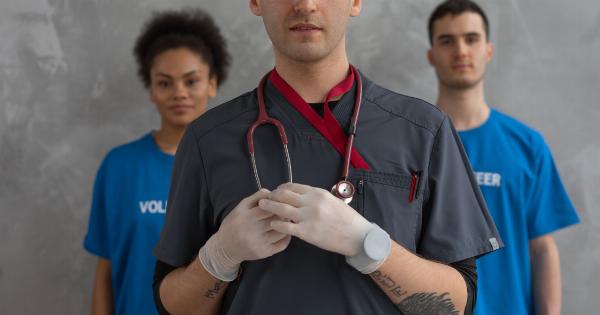An aneurysm is a life-threatening condition characterized by a bulge or swelling in the wall of a blood vessel. If an aneurysm ruptures, it can cause internal bleeding, stroke, and even death.
Although aneurysms are relatively rare, they can be difficult to detect since the symptoms are often subtle and may not appear until the condition has worsened.
Types of Aneurysms
There are several types of aneurysms that can occur within the body. Here are some of the most common types:.
Cerebral Aneurysm
Cerebral aneurysms are located in the brain. They are often asymptomatic but can cause headaches, blurred vision, and loss of consciousness in severe cases.
These aneurysms are also more common in women than men and can be detected through brain imaging tests.
Thoracic Aneurysm
Thoracic aneurysms occur in the chest and can cause chest pain, shortness of breath, and hoarseness. These aneurysms can be detected through imaging tests like a CT scan or MRI.
Abdominal Aneurysm
Abdominal aneurysms are located in the abdomen and can cause abdominal pain and back pain. These aneurysms are more common in men than women and can be detected through imaging tests like an ultrasound or CT scan.
Risk Factors for Aneurysm
There are several risk factors that can increase a person’s risk of developing an aneurysm. These include:.
- Smoking
- High blood pressure
- Family history of aneurysms
- Atherosclerosis (hardening of the arteries)
- Age (over 60 years old)
- Gender (men are more likely to develop aneurysms)
Symptoms of an Aneurysm
The symptoms of an aneurysm can vary depending on its location and size. In some cases, aneurysms may be asymptomatic and only detected through imaging tests. Here are some of the warning signs of an aneurysm:.
- Headaches
- Dizziness or lightheadedness
- Blurred or double vision
- Difficulty speaking or slurred speech
- Weakness or numbness on one side of the body
- Chest pain or back pain
- Shortness of breath
- Hoarseness
- Abdominal pain
Treatment for Aneurysm
Treatment for an aneurysm depends on its size and location. Small aneurysms may not require immediate treatment but will be monitored regularly to ensure they do not grow or rupture.
Large or ruptured aneurysms require emergency treatment to prevent internal bleeding and other complications.
Here are some of the treatment options for aneurysms:.
- Endovascular repair: This minimally invasive procedure involves inserting a stent or coil into the blood vessel to reinforce the wall and prevent rupture.
- Surgical repair: In some cases, large or complex aneurysms may require open surgery to remove and repair the affected blood vessel.
- Monitoring: Small aneurysms may be monitored regularly through imaging tests to ensure they do not grow or rupture.
Preventing Aneurysm
Although aneurysms may be genetic or unavoidable in some cases, there are steps you can take to lower your risk. Here are some of the ways to prevent aneurysms:.
- Quit smoking or refrain from smoking altogether
- Maintain healthy blood pressure through lifestyle changes or medication if necessary
- Maintain a healthy diet and exercise regimen
- Manage underlying health conditions like atherosclerosis or diabetes
- Get regular health screenings and imaging tests if you are at high risk for aneurysm
Conclusion
An aneurysm is a serious and potentially life-threatening condition that requires prompt diagnosis and treatment.
Although aneurysms may be difficult to detect, paying attention to potential warning signs and managing risk factors is essential for preventing complications.


























